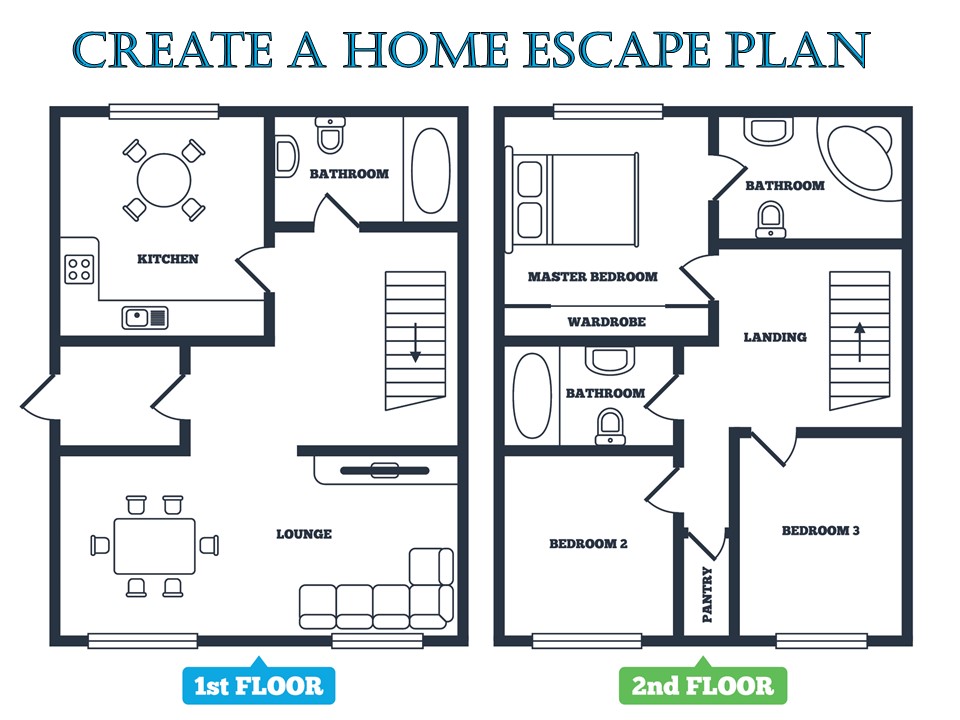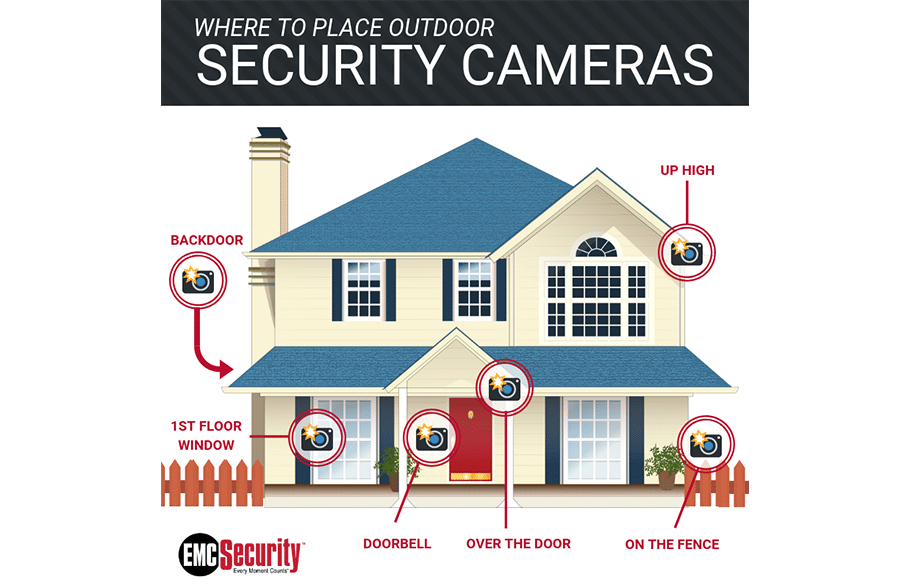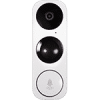Your cart is currently empty!
Tag: new emc
-

Don’t Miss an Important Call from EMC Security
Do you ignore calls from numbers you don’t recognize?
If you answered yes, read on for important safety tips regarding your EMC Security home monitoring system.
A call from the EMC Security Monitoring Center may indicate that there is an emergency at your home or business, or we may be calling to alert you of a problem with your alarm system. We know that many of our customers are using their cell phone as their monitoring center primary contact numbers, and we want to make sure you don’t miss an important call from our monitoring center. Many mobile phones will not display the caller name, only the incoming number, so you will need to enter this information on your phone.
Please enter these numbers in your cell phone and identify them as EMC Security Monitoring Center or EMC Security.
678-765-1000
1-888-745-4733
Insuring these numbers are identified as EMC Security, willinsure that you never miss an important call regarding your alarm system and your family’s safety.We don’t want you to miss an important call from our security monitoring center so please take the time to add these numbers to your cell phone and share them with your friends and family members. Everyone has something worth protecting, so share your sense of security with
you neighbors and coworkers and you could get two free months of monitoring. Find out more about our referral program here. -

Attic Storage Safety Tips
According to the US Fire Administration, over 10,000 attic fires a year are reported to US Fire Departments.
The majority of these fires are caused by electrical malfunction (created by faulty wires and ignition sources) and natural causes (such as lightning, which we reported last summer.) How do you take steps to mitigate the possibility of a dangerous fire in your home’s attic? We’ve got some tips here:
Don’t Store Flammable Liquids in the Attic
Volatile solvents such as paint, turpentine, cleaning products, gasoline, propane, kerosene or other hazardous chemicals don’t belong in an attic. Due to variances in insulation, extreme temperature swings occur in attics, which causes expansion and contraction of objects and liquids. This can cause combustion. All hazardous chemical liquids should be properly discarded—see the bottle label for exact details—or stored somewhere away from an ignition source.
Don’t Trust Your Treasures to the Attic Space
Valuable or sentimental papers, clothes
and toys are hard to toss, but they’re highly combustible fuel for a fire–especially if it’s a lightning strike, which is common in Georgia during thunderstorm season. All too often these items are stored in cardboard boxes, which not only burnfaster, but also attract insects such as termites or silverfish. If you can’t reduce, reuse or recycle, take a picture of the items as a keepsake.Clothing Storage Is Fine, with a Few Precautions
Never store fur or leather in an attic; the heat will damage the leather, and the fur will attract other furry creatures. Store other clothing in vacuum-sealed storage bags, and then place the bags in a plastic trunk, tote or portable closet. Plastic will burn, but it has a higher flash point than cardboard and provides some protection against smoke and water damage.
What Else Is Ok for the Attic?
Your empty suitcases are safe to store in the attic; they’re lightweight and not likely to combust. Lightweight holiday decorations are fine if they’re stored in plastic tubs, with one caveat; don’t store candles in the attic, unless you want to become the “House of Wax.” Off-season athletic equipment, if it’s not heavy, is fine too. Remember to store items only on step-secure flooring, or you could end up in the living room.
Want to make sure your entire home is covered for fire and smoke monitoring? At EMC Security,fire monitoring is part of our basic services. With alarm monitoring rates beginning at $16.95, you can protect against intrusion and fire at one low price.
-

Stop Burglars From Stealing Your Packages
Learn more about EMC Security’s camera options here, and don’t forget to check out the rest of our smart home innovations!‘Tis the season for holiday shopping. And today, buying gifts is easier than ever thanks to online stores. But since many delivery services aren’t legally allowed to use your mailbox, they have to leave their precious cargo on your porch, right out in the open.
And an unguarded box on an un-watched porch is about as easy as a target as there is. Up to one in three people in America will be victims of porch package theft, and those odds only increase near the holidays.
So, how do you protect your packages from porch pirates?
By having an extra set of eyes to watch your back.
A Video Doorbell allows you to see and hear exactly who comes to your door, no matter where you are. Even if they don’t ring the doorbell, the PIR (passive infrared) sensor will detect human activity and alert you on your mobile device. With 2-way audio, you can speak with whoever is at the door, watch live video, and store clips.
Studies have shown that burglars are much less likely to target homes with visible security cameras, and the outdoor camera looks the part. It features infrared night vision, so you can see what’s happening at your front door, back entrance, or garage, no matter what. If something is detected, you’ll get notified on your mobile device.
So, once you’ve outfitted your front door with a security camera, what else can you do?
- First, if possible, become friendly with the people that deliver to your house and let them know where you prefer to have your packages left – like, for instance, behind the potted plant, or by your back door.
- Better yet, purchase a package locker or lockbox for your front porch, so your delivery person can lock your holiday gifts safely inside until you get home.
- And don’t forget to post a sign mentioning that your home is under surveillance!
-

5 Ways to Use Your Indoor Security Camera
Every home could use an indoor security camera as an extension of their home security system. They are great for peace of mind when you have a new baby, kids at home
alone, It’s important to remember that security cameras are not a replacement for monitored home security systems. They are to simply add an extra layer of security. If you want to feel safe and secure inside your home, you should purchase a security system with professional monitoring so if an intruder gets inside, you will have help – quickly.
Below are 5 places inside your home that you should consider for an indoor camera:
Front and Back Doors
- It makes sense to monitor the main entrances of your home. Most burglars will try the front doors first, and
then side and back doors next. - For indoor security, point the camera directly at the door. If possible, aim to keep the camera about 7 feet off the ground pointing down at a slight angle. This is ideal to capture a clear view of an intruder’s face.
First Floor Windows
- If an intruder cannot get in through a door, they might try the first-floor windows. Having a security camera sit on a table facing the window (diagonally to reduce glare) can work as a great deterrent. Because burglars know more about home security and security systems than most law-abiding citizens, they might deduct that they have been caught on video and make an escape.
- Cameras may deter would-be burglars, or record their crime, but they do not physically reinforce your first-floor windows. Installing a security system with sensors on both your doors and windows should always be a priority in making your home the most secure.
Master Bedroom
- The master bedroom is usually the first place a burglar heads to because many valuables are stored here.
The master is also a great place for a camera with two-way audio. Speaking to the intruder directly might cause them to flee the scene without taking anything.
Stairways
- Home burglaries happen very quickly, and as a result, the criminals are in and out of the home in minutes. The stairs are an area that forces a person to slow down, especially on the descent. Placing a camera here guarantees two looks at the perpetrators, as they will need to go up and down.
Garages & Sheds
- Approximately 9% of all break-ins occur through garage doors. But even if your home isn’t invaded, open garages can offer a wealth of opportunities to steal resalable items. Place the camera inside the garage at an angle, facing out to reduce glare.
Check out EMC Security’s selection of video cameras at emcsecurity.com.
- It makes sense to monitor the main entrances of your home. Most burglars will try the front doors first, and
-

How to Create a Fire Escape Plan
If there is a fire in your house, your ability to get out depends on the reliability of your fire alarm system and proper planning.
Below are tips from the NFPA (National Fire Protection Association) for developing a fire evacuation plan for your household. For easy planning, download NFPA’s escape plan here.
- Draw a floor plan of your home.
- Walk through your home and inspect all possible exits and escape routes.
- Mark two ways out of each room, including windows and doors.
- Mark the location of each smoke alarm.
- Check to make sure the escape routes are clear and doors and windows can be opened easily.
- If your home has two floors, every family member (including children) must be able to escape from the
second floor
- Choose an outside meeting place a safe distance in front of your home where everyone can meet after they’ve escaped. Make sure to mark the location of the meeting place on your escape plan.
- Make sure your street number is clearly visible from the road. If not, paint it on the curb or install house numbers to ensure that responding emergency personnel can find your home.
- If there are infants, older adults, or family members with mobility limitations, make sure that someone is assigned to assist them in the fire drill and in the event of an emergency.
- If windows or doors in your home have security bars, make sure that the bars have emergency release devices inside so that they can be opened immediately in an emergency.
- Practice your home fire escape plan twice a year, making the drill as realistic as possible.
- Install smoke alarms in every sleeping room, outside each sleeping area and on every level of the home. NFPA 72, National Fire Alarm Code® requires interconnected smoke alarms throughout the home. When one sounds, they all sound. Call EMC Security to add fire detection devices in your home today.

Download Escape Plan Template Here
EMC Security monitors for
fire at no additional monthly monitoring cost. Call us to purchase smoke and heat detectors for your home today at 770-963-0305. -

5 Facts You Need to Know about DIY Self-Install Security
We have seen an influx of DIY “Big Box” Security Systems enter the marketplace over the last few years.
Technology has proven to be easy to use and install, and
cost effective for the consumer.In fact, EMC Security launched our popular Self-Install Security System for these very reasons. Our customers love the option because it saves money, time, and it’s hassle-free. Additionally, the system works great. It’s the same professional system our technicians install in homes every day with the same great professional monitoring from 2 central monitoring stations, and all the benefits that every EMC Security customer receives:
award winning service and 24/7 technical support.Some DIY Security Systems can be down-right dangerous to rely on as a source of protection for your home and family.
Below are 5 Facts You Need to Know About DIY Self Install Security Systems
1. You are on your own when purchasing a system at a retail store. If you don’t know what you need for complete protection, how are you going to “build” your DIY system?
EMC Security’s DIY Security consultants work with you to determine exactly what you need according to your home specifications and safety concerns. We’ll even label the equipment for you so you know which piece goes where.
Once you install the system, our central station will test each sensor to ensure it works properly.
2. A system built for self-monitoring gives a false sense of security. A lot of the DIY home security systems on the market are built specifically for self-monitoring. While we are big fans of interactive technology that sends alerts and notifications to your smart-phone, we do not think you should rely on alerts alone when it comes to the protection of your home and family.
EMC Security’s
self install systems are designed for professional monitoring by EMC Security’s central monitoring stations. If an alarm is triggered, EMC Security will notify you, and if you can’t be reached the authorities will be dispatched….within seconds.3. Poor “cheap” equipment. One of the number one consumer complaints about DIY security systems on the market is
the cheap , unreliable equipment. There’s something to be said for equipment manufactured by a leader in the industry.4. Lack of technological support. If you have an issue with the installation, who can you call? What if something goes wrong with one of the sensors or the keypad? Does the company have service reps that can swing by your house to assist you? These are important questions to ask before buying from an online or “big-box” retailer.
Even though our DIY system is fast and easy to install, EMC Security has local,
award winning service representatives available with just a simple phone call.5. Who is testing the system? EMC Security runs alarm signal tests on every customer every month. If we don’t get a signal, the customer is notified and a service technician is sent out if necessary. A DIY system purchased from a retail store will most likely not provide any customer support after the purchase.
Give EMC Security a call today at 770.963.0305 to discuss your needs and how we can build a DIY Self Install Security System that’s right for you. OR order online now!
-

Panic Button Protects Customer and Stops Home Invasion!
Home intruders strike homes whether people are at home or away.
Statistics show someone is home in three out of every ten burglaries.
The EMC Security monitoring center received a panic alarm from the keyfob of the security system customer in Gainesville, Georgia. Once the panic button is pressed, the alarm sounds in the home and EMC Security immediately dispatches the police. The woman that pressed the panic button told us that she thought she could hear someone breaking into her home through one of the windows.
She heard noise on the outside of her home for a few minutes but did not think someone was trying to enter the home. Soon after she could hear the sounds of a person inside the home. The customer was fortunate enough to have a key fob with a panic button to manually set off the system when she heard sounds of a break-in and noises of someone in the home.
The system activation – and alarm – scared off the potential intruder.
Though we do not know what the intruder’s intentions were, we know that the security system potentially saved the customer’s life and valuables.
Please inquire about including a panic button key fob as a part of your home security system. The EMC Security panic button key fob will always operate whether your security system is armed or not. It is a valuable addition to your security system.
-

Best Places to Put Your Outdoor Camera
A home without a security system is 3 times as likely to get broken into than one with a security system.
Video cameras add even more protection because they often deter criminals before attempting to get into a home.
According to the survey, “Understanding Decisions to Burglarize from the Offender’s Perspective,” conducted by the University of North Carolina, 60% of burglars would consider the presence of security cameras when selecting a target, and more than 40% said that cameras are a factor in choosing another target.
Law abiding people don’t tend to consider the mind of a burglar. But the fact is, most thieves know more about home security than the average
home owner . So it’s important to know the best place to put a security camera so they skip your home and move on, away from your property.We’ve uncovered the best places to install security cameras around the outside of your home to help deter burglars.
Front Door
- Because most burglars try the front door first, installing a security camera here is a great way to deter them before they try to get in.
- Place your camera above the door, about 7 feet up, at a downward angle to best record facial images.
Side and Back Doors
- If the front door isn’t an option, the burglar will most likely try a side or back door. Reports show that 22% of burglars enter through the back door because they know that in most homes the back door is not as secure as the front.
- If there is a window at the door, position the camera so that it covers them both.
- It’s also a good idea to position a camera to cover your entire backyard and any out-building you may have.
Windows
- Approximately 23% of burglars will break into a home from a
first floor window if they can’t get in through a door. Windows at the back or side of the house are the most vulnerable. - This is also a good place for an indoor camera placed on a table focusing on the window and anything that might crawl through.
Garage
- Approximately 9% of burglars get in the house through the garage so consider pointing a security camera at your garage doors.
It’s important to remember that security cameras are not a replacement for monitored home security systems. They are to simply add an extra layer of security. If you want to feel safe and secure inside your home, you should purchase a security system with professional monitoring so if an intruder gets inside, you will have help – quickly.
Below are more stats that may help you decide where to place your outdoor security cameras:
- 81% of break-ins occur on the first floor
- 4% of burglars will enter a residence via a basement
- 12% walk in casually through unlocked entrances
Check out EMC Security’s selection of video cameras including our indoor camera priced at just $79.
-

What Makes EMC Security Different Than the Others?
The biggest difference: No Contracts!
You can’t purchase another professionally installed security system without agreeing to at least a 36-month contract. This practice has been the standard for years so the providers can offer low up-front installation and equipment fees. The problem with this is once the equipment costs would be paid off, the high monthly fee (absorbing the equipment costs) does not reduce.
Since our inception in 1998, EMC Security has offered no-contract monitoring service. You pay for your equipment upfront with monitoring and communication charges paid on a month to month basis, with the option to cancel any time. If you need to finance the equipment, we have an interest-free option for that as well.
Security Technology
EMC Security sells a variety of security equipment including Honeywell security technology. Honeywell is the largest manufacturer of security technology in the world. All the equipment is non-proprietary which means that other companies can reprogram it for their monitoring system. Some well-known, national companies do not sell this type of technology, preferring instead to use their own proprietary equipment, blocking other companies from monitoring the systems. This trend is unfortunately one that locks customers in as well, because the system is worthless if you are not happy with the monitoring service.
Alarm Monitoring
EMC Security’s monitoring cost of $16.95 per month and has not changed since 1999. We believe everyone should be able to afford to be safe at home, so we keep costs low. Most notably though is our Secure Path Technology. No matter what extra features a home security system offers, the bottom line is whether someone is monitoring your home 24/7 and can get help to you fast when you need it most.
EMC Security pioneered a monitoring architecture that sends a signal simultaneously to two, separately staffed, UL listed, CSAA Five-Diamond Certified command centers, which means a highly trained operator will always be available to answer the call. With an average response time of 14 seconds, homeowners have the added peace of mind that comes with rapid response.
Most security providers utilize a single command center that requires rerouting in the event the first center is busy or otherwise disabled, wasting time and creating unnecessary risk.
Additionally, security technology is built with an “alarm signal delay” of at least 45 seconds. EMC Security overrides this delay so the signal is transferred to our monitoring centers immediately. A lot can happen in 45 seconds and we don’t want to take that chance when lives are at stake.
What EMC Security Can Do For You That Others Can’t
Custom System vs Package Deals
The reason why buying home security can be so confusing is that companies offer security “packages”. The packages start at a base price, often with “free equipment” included, and go up to what is often an astronomical price. EMC Security does not offer package pricing. Our systems are customized for your home and lifestyle so your system is the perfect blend of technology that fits your needs.
Customer Service
Finally, what separates EMC Security from the rest is our ownership and values. Because we are owned by three of the largest non-profit power companies in Georgia, we are able to keep costs down and focus on service. Like our parent companies, we put customer satisfaction above everything else because we know that happy customers are key to maintaining a successful business. By endorsing highly ethical business practices, both within our organization and across our customer and potential customer base, we send our message as a standard, not as a fallback.
This is very important when the lives of our customers are at stake.
-

Professionally Installed vs. Self-Installed Security
With the introduction of advanced technology, there are many home security options available.
Most of them fall into two categories: professionally installed, and
self installed /DIY systems.Below we will provide the benefits of each to ensure you get the system right for you.
Professionally Installed Systems
When you purchase a professionally installed security system, like one from Atlanta’s own EMC Security, a security expert assesses your home and lifestyle to determine the security solution that is right for your needs. Once the system is customized for your home, a professional security technician will install and test the system. This includes installing the panel, keypad, sensors, and integrating remotes services on your mobile devices. A wireless system takes 2-4 hours to install and test every sensor to ensure it’s working properly.
Some homeowners decide to install a pre-wired system. Pre-wired security systems have wires connecting each device to the control panel (or hub of the system) and operate on electricity in the home. Installation could take a full day, depending on the size of the home and type of system.
There are some companies that make outrageous offers for free security systems with professional monitoring. If you choose to evaluate these companies for your home security, pay attention to the fine print and contract terms. If it sounds too good to be true, it probably is. A reputable security company will charge a fair price for equipment, offer payment terms, and keep monthly monitoring costs affordable.
Is a Professionally Installed Security System right for you? Find out here.
Self-Install/DIY systems
A home security system you install yourself, like EMC Security’s Self-Install System, can be a more affordable, convenient option for many people looking to secure their homes. With this type of system, you can install it when it’s most convenient for you – without taking off work or scheduling appointments. It’s also typically more cost effective since you are not paying for installation.
It’s important to note that not all DIY security systems are the same. EMC Security cautions against systems from the “big box” stores. We believe no one should trust their home and family’s safety to anyone other than a professional security company.
Here’s why:
1. You are on your own when purchasing a system at a retail store. If you don’t know what you need for complete protection, how are you going to “build” your DIY system? EMC Security’s consultants work with you to determine exactly what you need according to your home specifications and safety concerns.
2. A system built for self-monitoring gives a false sense of security. A lot of the DIY home security systems on the market are built specifically for self-monitoring. While we are big fans of interactive technology that sends alerts and notifications to your smart-phone, we do not think you should rely on alerts alone when it comes to the protection of your home and family. EMC Security’s
self install systems are designed for professional monitoring by EMC Security’s central monitoring stations. If an alarm is triggered, EMC Security will notify you, and if you can’t be reached the authorities will be dispatched….within seconds.3. Some are Poor “cheap” equipment. One of the number one consumer complaints about DIY security systems on the market is
the cheap , unreliable equipment. There’s something to be said for equipment manufactured by a leader in the industry. EMC Security sells Honeywell Security equipment. Honeywell is the #1 security equipment provider in the world and you can count on this technologybeing the most advanced, best quality in the world.4. Lack of technological support. If you have an issue with the installation, who can you call? What if something goes wrong with one of the sensors or the keypad? Does the company have service reps that can swing by your house to assist you? Even though our DIY system is fast and easy to install, EMC Security has local,
award winning service representatives available with just a simple phone call.5. Who is testing the system? EMC Security runs alarm signal tests on every customer every month. If we don’t get a signal, the customer is notified and a service technician is sent out if necessary. A DIY system purchased from a retail store will most likely not provide any customer support after the purchase.






